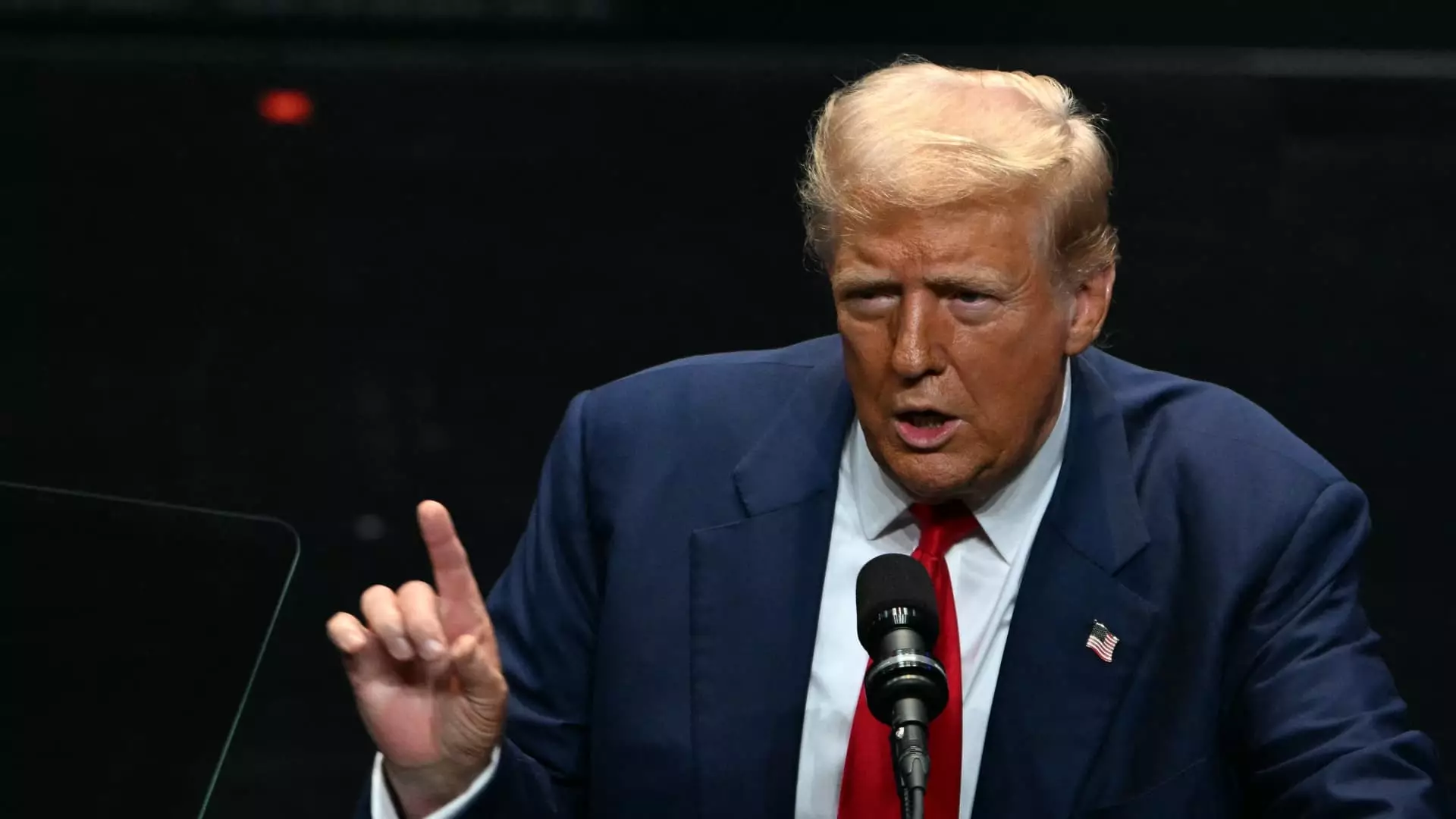In a bid to reclaim his economic agenda, former President Donald Trump took center stage at a rally in Savannah, Georgia, presenting bold new manufacturing proposals. These announcements come amidst an impending policy unveiling by Vice President Kamala Harris, adding a layer of competitive tension to the upcoming electoral battle. While Trump’s strategies echo themes from his first presidential term, they signal an evolution in his approach as he faces increasing scrutiny and opposition from the Democratic side.
Reinventing the Manufacturing Landscape
One of the core facets of Trump’s recent proposals revolves around enhancing incentives for U.S.-based manufacturers. By offering expanded research and development (R&D) tax credits, Trump aims to create a favorable environment for businesses to invest in heavy machinery and equipment. His plan suggests allowing companies to write off 100% of these costs in the first year of purchase, contrasting markedly with the gradual amortization of R&D expenses instituted by the Tax Cuts and Jobs Act of 2017. This pivotal change suggests a strategic reversal that seeks to reignite manufacturing growth and bolster domestic production capabilities.
The implications of such a policy shift are significant. Immediate write-offs could enhance cash flow for manufacturers, encouraging them to reinvest in innovation and operational expansion. However, this proposal faces skepticism given its departure from a previous policy framework that was designed to stimulate longer-term economic stability. Critics may question whether reinstating a model emphasizing immediate deductions aligns with sustainable fiscal strategies or merely serves as an election-year tactic.
A Focused Trade Policy
Trump also reiterated his tough stance on trade, proposing hefty tariffs on imported vehicles, especially from Mexico. His assertion of imposing tariffs as high as 200% underscores a commitment to protect American jobs, yet raises alarm for those advocating for global trade relations and the competitive pricing dynamics they encourage. Furthermore, the repercussions of such tariffs may extend beyond borders, affecting consumer prices and supply chains.
This aggressive trade policy resonates with a segment of voters who prioritize national manufacturing and jobs but could alienate businesses reliant on international supply chains. As Trump’s economic rhetoric intensifies ahead of the November election, the balance between protectionism and free trade will undoubtedly be a topic of passionate debate.
In an unusual yet telling move, Trump proposed the creation of a “manufacturing ambassador,” tasked explicitly with the mission of enticing foreign manufacturers to return to American soil. This role highlights a focused strategy to actively engage global businesses, signaling an administration that prioritizes tangible manufacturing growth. However, one must ask whether such an approach is sustainable in the face of complex globalization trends and whether it’ll prove effective in fostering genuine interest from manufacturers who may find better advantages overseas.
The necessity for such a position raises further questions about the broader vision for trade and industry under a potential second Trump administration. Will it facilitate a cooperative relationship between government and industry, or will it exacerbate tensions between domestic policies and global business realities?
As Trump unveils his manufacturing proposals, the response from Harris and her team is poised to challenge his economic narrative. Harris’s campaign is gearing up to present its economic policy, aiming to differentiate itself by promoting a vision that emphasizes equitable growth and corporate accountability. Critics of Trump’s approach, including notable figures like billionaire investor Mark Cuban, assert that while Trump’s policies might resonate with certain voters, they could ultimately lead to economic volatility. Their advocacy for a more stability-oriented platform will play a crucial role in shaping public perception of economic policy in the coming weeks.
As the electoral race intensifies, Trump’s unveiling of new manufacturing proposals reflects a strategic effort to galvanize economic support from voters concerned about jobs and domestic production. Yet, the complexities of these policies, juxtaposed with the anticipated Democratic response, reveal an intricate landscape where economic aspirations are intricately tied to political ambitions. The forthcoming weeks leading up to the election will be pivotal in evaluating not only the viability of Trump’s proposals but also the broader narrative surrounding American manufacturing and economic resilience.


Leave a Reply